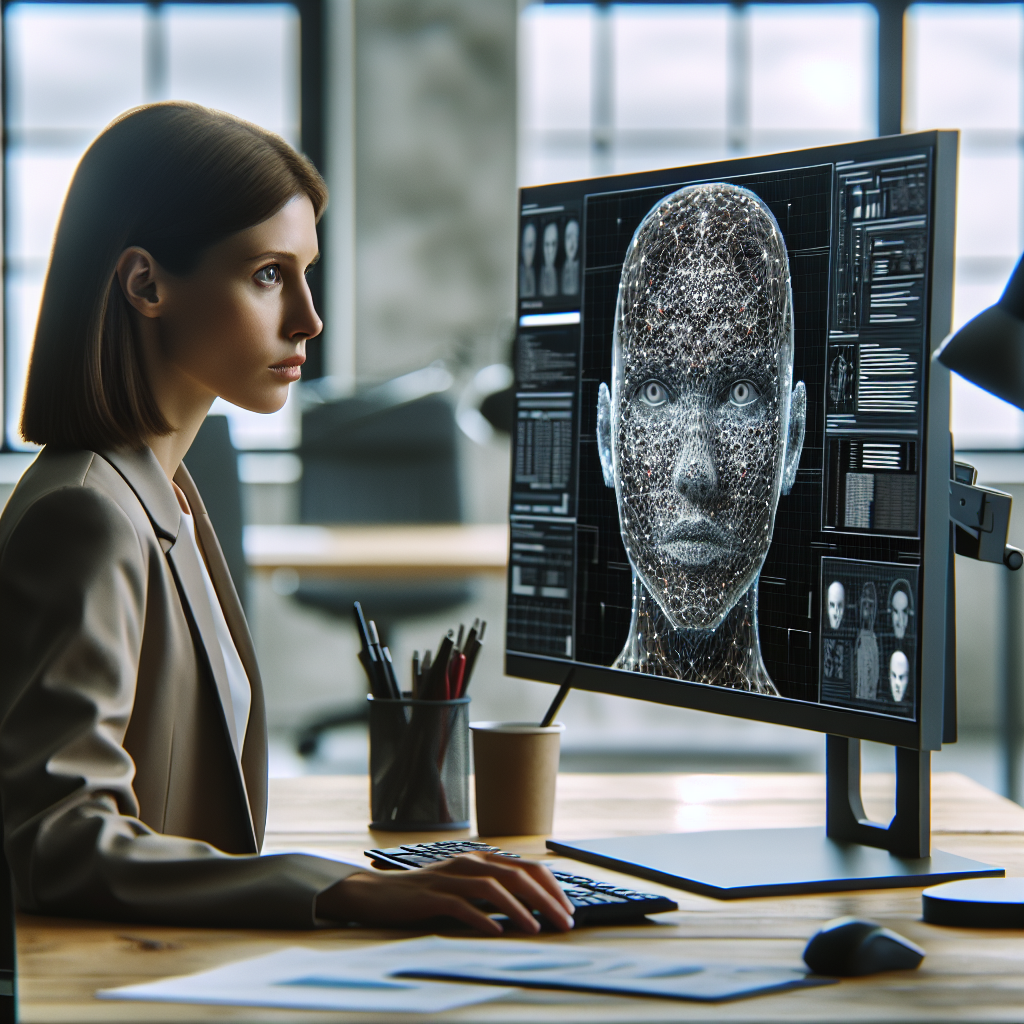
AI-Generated Child Abuse Images Becoming Alarmingly Realistic: Watchdog Warning
Digital safety experts have raised serious concerns about the increasing realism of AI-generated child sexual abuse material. Watchdog organizations now warn that artificial intelligence tools have reached a troubling milestone in their ability to create convincing abusive imagery. This development threatens child safety online and challenges law enforcement’s ability to distinguish between real and synthetic content.
The Growing Threat of AI-Generated Abuse Content
The Internet Watch Foundation (IWF), a leading organization fighting online child abuse, recently reported a disturbing trend. AI-generated images depicting child sexual abuse have become “significantly more realistic” over the past year. These synthetic images now closely resemble actual photographs, making detection increasingly difficult.
Dan Sexton, Chief Technology Officer at the IWF, noted that the technology has advanced rapidly. “The quality of AI-generated imagery has improved dramatically,” he explained. “What we’re seeing today looks almost indistinguishable from real photography in many cases.”
This technological leap creates new challenges for child protection. Previously, AI-generated abuse content often contained telltale signs of artificial creation. These included distorted features, unrealistic textures, or strange artifacts. However, the latest generation of AI tools can produce images that appear authentic even to trained observers.
Why This Matters: Beyond Pixels and Algorithms
The implications of this trend extend far beyond technical concerns. While these images don’t involve actual children in their creation, they still cause significant harm. Experts point to several troubling consequences:
- Normalization of abuse through realistic depictions
- Potential use in grooming real children
- Creating demand for actual abuse material
- Overwhelming detection systems with synthetic content
- Complicating prosecutions when real vs. AI content must be distinguished
Sarah Smith, a child protection advocate and researcher, emphasizes that the impact goes deeper. “These images don’t exist in isolation,” she argues. “They contribute to an ecosystem that ultimately harms real children by reinforcing dangerous behaviors and creating markets for abuse.”
Technical Evolution: How AI Image Generation Improved
The leap in image quality stems from recent advances in generative AI technology. Early text-to-image models struggled with human anatomy and realistic textures. Today’s models build on massive datasets and refined algorithms. They can now produce photorealistic output that addresses previous limitations.
This improvement comes from several technical developments. Advanced diffusion models create more coherent images. Better training methods help AI systems understand human proportions. Additionally, new techniques have reduced common artifacts that previously marked AI-generated content as fake.
Furthermore, specialized models now exist that focus specifically on human figures. These models can generate remarkably convincing imagery of people across different ages, including children. While legitimate applications exist for this technology, it clearly creates opportunities for misuse.
Regulatory and Legal Challenges
The rise of realistic AI-generated abuse material creates complex legal questions. Many jurisdictions already prohibit computer-generated child sexual abuse imagery. However, enforcement challenges grow as the content becomes more realistic.
Law enforcement agencies face several dilemmas in this emerging landscape:
- Allocating limited resources between investigating real vs. AI-generated abuse
- Developing reliable detection tools that can keep pace with AI advances
- Creating appropriate legal frameworks that address synthetic content
- Cooperating across international boundaries where laws differ
Detective Inspector James Watson, who specializes in online child protection, describes the challenge: “These cases consume significant investigative resources. We must determine if real children were harmed in creating the content. This takes time away from other critical cases.”
According to the National Center for Missing & Exploited Children, reports of suspected online child sexual exploitation have increased dramatically in recent years. The addition of realistic AI-generated content further complicates this already overwhelming problem.
Technology Companies’ Response
Major AI developers have implemented various safeguards against misuse of their image generation tools. These typically include:
- Content filters that block requests for inappropriate imagery
- Age verification systems for users
- Watermarking or metadata tagging of AI-generated images
- Monitoring and reporting systems for policy violations
However, critics argue these measures remain insufficient. Open-source models often lack robust safeguards. Additionally, dedicated misuse forums share techniques to bypass content filters. As the technology becomes more accessible, controlling its application becomes increasingly difficult.
David Chen, an AI ethics researcher, points out a fundamental challenge: “The same technological advances that improve legitimate AI applications also enhance the potential for harmful use. This dual-use problem requires technical, legal, and social responses working together.”
Detection Efforts and Technical Countermeasures
The fight against AI-generated abuse imagery has sparked innovation in detection technology. Several approaches show promise in identifying synthetic content:
- Digital fingerprinting systems that recognize AI generation patterns
- Metadata analysis tools that detect manipulation markers
- Advanced algorithms trained to identify subtle inconsistencies
- Collaborative databases of known AI-generated harmful content
The Internet Watch Foundation has partnered with technology companies to improve detection capabilities. Their joint research aims to stay ahead of evolving generation techniques. However, maintaining this technological edge requires constant adaptation and investment.
Furthermore, experts emphasize that technical solutions alone cannot solve the problem. Comprehensive approaches must include education, regulation, and support for victims. The technology race between generation and detection continues with significant implications for child safety online.
International Cooperation and Regulatory Frameworks
Because the internet transcends national boundaries, effective responses require global coordination. Several international initiatives address the growing threat of AI-generated abuse material:
- Cross-border law enforcement operations targeting creators and distributors
- Harmonization of laws regarding synthetic abuse imagery
- Technology sharing agreements between national authorities
- Development of common standards for content moderation
Despite these efforts, significant gaps remain in the international response. Different legal definitions create enforcement challenges. Resource disparities between countries limit effective action in some regions. Additionally, jurisdictional questions complicate investigations involving multiple countries.
Policy experts suggest that upcoming AI regulations should specifically address generated abuse content. Strong protections must balance innovation with child safety. This requires thoughtful regulatory frameworks that adapt to rapidly evolving technology.
The Path Forward: Protecting Children in an AI-Powered World
Addressing the challenge of increasingly realistic AI-generated abuse material demands a multi-faceted approach. Key elements include:
- Enhanced technical safeguards built into AI systems from the design stage
- Stronger legal frameworks specifically addressing synthetic harmful content
- Improved detection and reporting mechanisms across platforms
- Education for parents, educators, and children about online risks
- Support services for those affected by abuse imagery
Dr. Emily Roberts, a child psychologist specializing in digital safety, emphasizes the importance of prevention: “While detection and enforcement are crucial, we must also focus on education and awareness. Teaching children about online safety and helping adults recognize warning signs creates a protective environment.”
Industry collaboration also plays a vital role. Major technology companies have joined initiatives like the Technology Coalition, which develops tools and approaches to combat child exploitation. These collaborative efforts must expand to include smaller platforms and open-source communities.
Conclusion: The Urgent Need for Action
The increasing realism of AI-generated child abuse imagery represents a significant challenge to online safety. This technological development demands immediate attention from policymakers, technology companies, and child protection organizations.
As AI tools become more accessible and powerful, the potential for misuse grows. However, through coordinated action, society can develop effective responses that protect children while allowing beneficial AI development to continue. This balance requires ongoing vigilance, investment in protection measures, and commitment to placing child safety at the center of technology policy.
The watchdog warnings about increasingly realistic AI-generated abuse content serve as an important call to action. The time for comprehensive responses is now, before technological advances further complicate protection efforts.
What You Can Do
Individuals can contribute to addressing this challenge in several ways:
- Report suspected harmful content to relevant authorities or organizations like the IWF
- Support organizations working on child protection online
- Advocate for strong safety measures in AI development
- Educate yourself and others about digital safety
- Talk openly with children about online risks in age-appropriate ways
By working together at all levels—from individual awareness to international cooperation—we can create a safer digital environment for children even as AI technology continues to advance.


